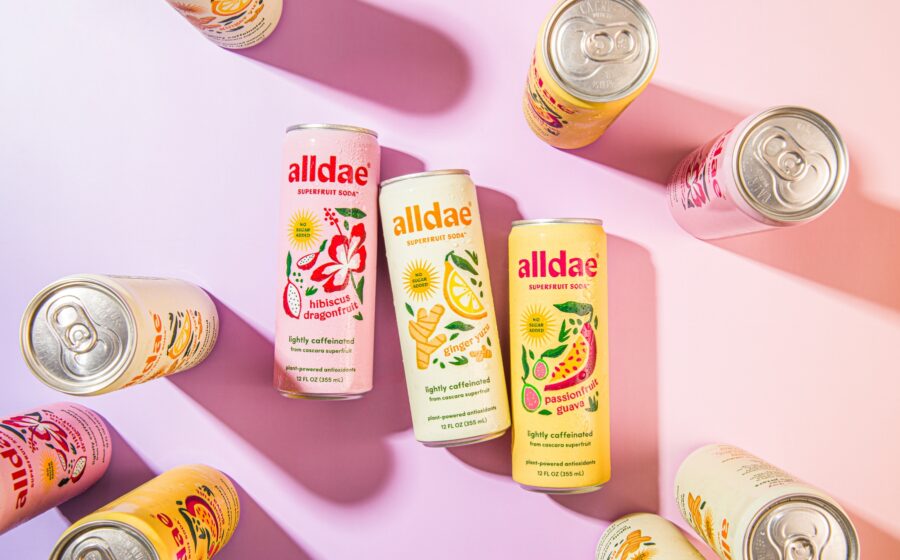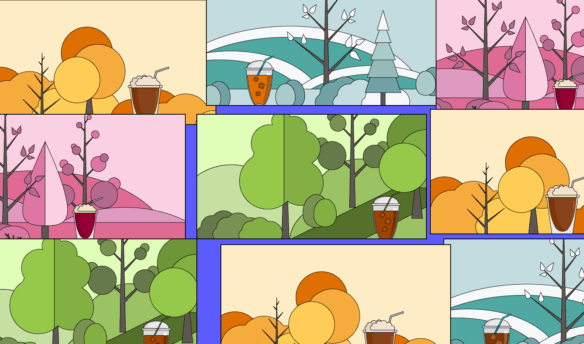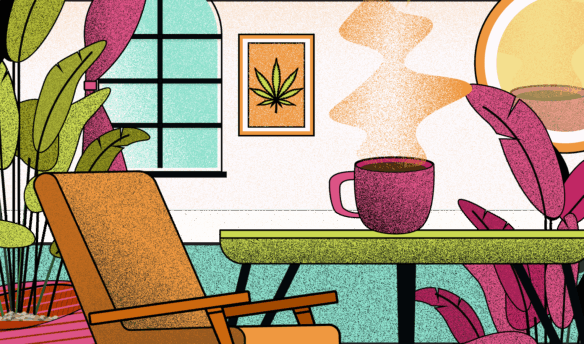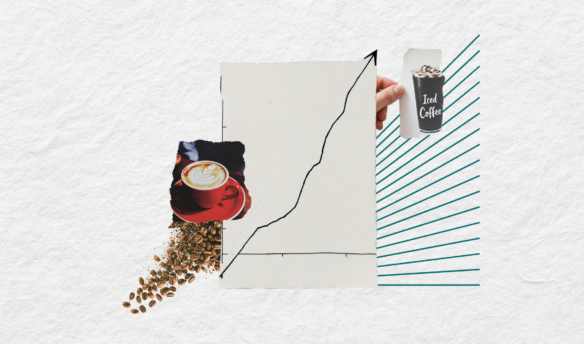In 2014, Fresh Cup published an overview of cascara, or the dried skins of coffee cherries. Even though that article remains one of our most popular stories, cascara—and the drinks made from it—still flies under the radar more than a decade later.
“People don’t really know what coffee fruit is. They think it will taste like, and have the effects of, coffee,” says Liz Carufel, co-founder and CEO of The Other Side of Coffee. The California-based company launched in 2020 and claims to offer the “first-ever” non-carbonated coffee fruit juice, squeezed directly from coffee cherries.
That product is part of an emerging market that combines cascara with the booming ready-to-drink (RTD) sector. Growing consumer interest in beverages with low amounts of alcohol, added sugar, and caffeine reveals an opening for coffee-fruit-based RTDs. In addition to The Other Side of Coffee, brands like Dianae and Alldae Superfruit Soda have entered the market.
Today, many companies in this small but growing segment are basing their marketing messaging to focus on cascara’s mild caffeine boost (in comparison with coffee), as well as the fact that it is an upcycled ingredient.
If these brands have any say, 2025 will be a big year for cascara—and we might just see coffee fruit beverages rivaling other coffee RTDs for visibility in the coming years.
Taste and Categorization
Cascara occupies an unusual middle ground between coffee and fruit tea or juice, and its flavor is similarly difficult to classify. Although it depends on where the plant is grown, cascara can taste variously like rosehip, hibiscus, cherry, or even mango or tobacco. But as new RTD brands continue to enter the market, people who work with cascara say this hard-to-pin-down quality remains a major barrier with consumers.
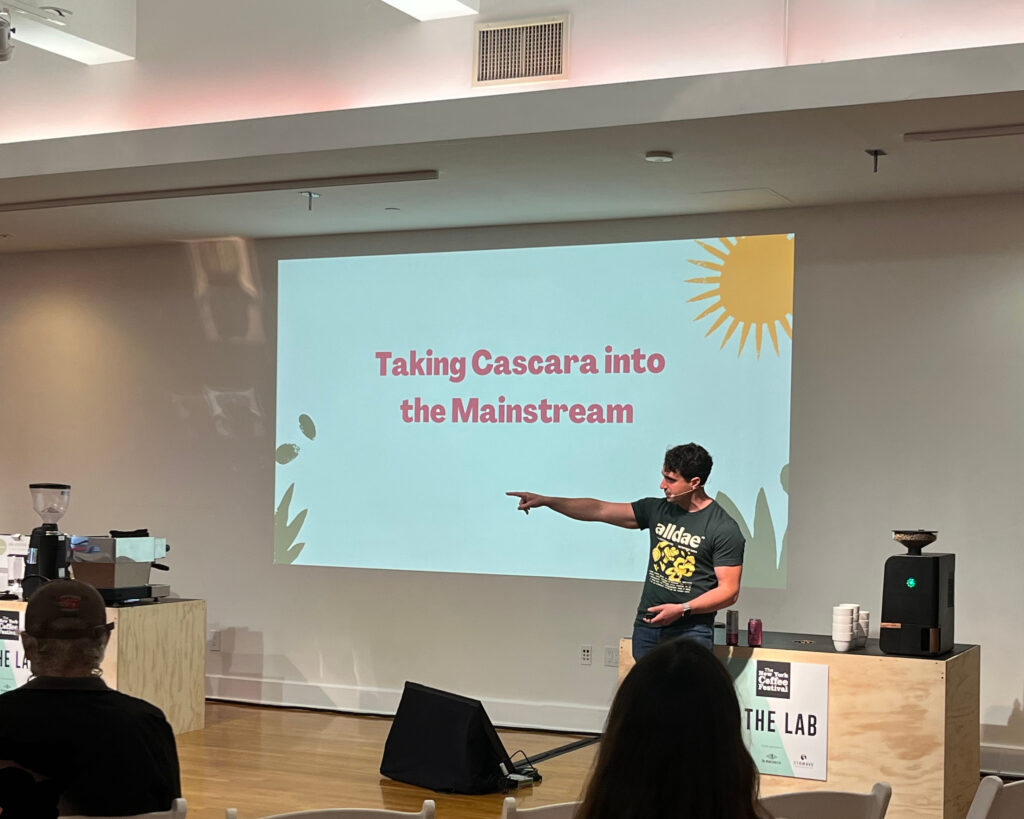
Emanuele Diana is the founder and CEO of Switzerland-based Dianae, which sells loose cascara for brewing and makes a drink bottled from brewed cascara. He learned about cascara while traveling in Ethiopia, where it has been consumed for hundreds of years.
His first impression of cascara was that it was similar to black tea or maté. Now, he tries to bridge the gap in consumer understanding by calling cascara “the fruit of the coffee.” He says, “We shouldn’t neglect that it is coffee, because it is. But using the word ‘fruit’ allows people [to make associations] with fruit tastes, not coffee, which helps them understand.”
Carufel says that if you were to snack on a fresh coffee fruit, “it kind of tastes like a sour grape. There’s a hint of sweetness, but it’s tart enough to make you pucker.”
As a result, brands that offer coffee fruit beverages face a key development decision: Should they keep the drink as close in taste to the coffee fruit as possible, or try to differentiate with other flavors?

Many new cascara products reflect regional differences in drink development and marketing. In 2021, Nestlé Oceania launched NATIV Cascara, which was framed as an “adult social beverage” and “infused with natural native Australian flavours” like kakadu plum (which many say is more sour than sweet) and pepperberry (described by some as sweet, bitter, and spicy all at once). In 2024, Nestlé China launched a similar line focused instead on the “coffee meets tea” experience, made with cascara sourced from the Yunnan province.
Diana says he worked hard to optimize factors like brewing time to maximize sweetness, only adding lemon juice to Dianae’s bottled drink to best “keep cascara’s authentic taste.” Both Alldae and The Other Side of Coffee pair brewed cascara and coffee fruit juice, respectively, with other fruit flavors that provide a way for consumers to connect with the drink.
“We wanted to theme our brand around ingredients that would sound exciting and fun, while grounding them in something that people are familiar with,” says Ryan McDonnell, co-founder and CEO of Alldae. He adds that consumers have indeed resonated with the company’s approach since its 2023 rebrand.
Although it’s helpful for consumers to know about cascara’s origins, ultimately, McDonnell doesn’t think categorization is a make-or-break problem for coffee fruit RTDs. “Many people love kombucha for its health benefits and have no idea that it’s fermented tea,” he says.
Cascara: A Third Alternative
More and more consumers (especially Gen Zers) are losing interest in alcohol while gaining interest in functional ingredients—think adaptogenic reishi mushrooms or antioxidant-laden smoothies. Given what Carufel says is an increasingly “caffeine-conscious” audience (theirs skews female and millennial and older), coffee shops are well-positioned to offer cascara-based mocktails or RTDs.
Alldae has found a place in the grab-and-go coolers of cafe chains like Intelligentsia Coffee, Joe Coffee, and Birch Coffee, where it fits into what McDonnell calls the “better-for-you soda category.” Consumers often want something in the mid-afternoon, says McDonnell, “but coffee’s a bit too much, energy drinks are a lot too much, and there’s not much else with a smaller dose of caffeine.”
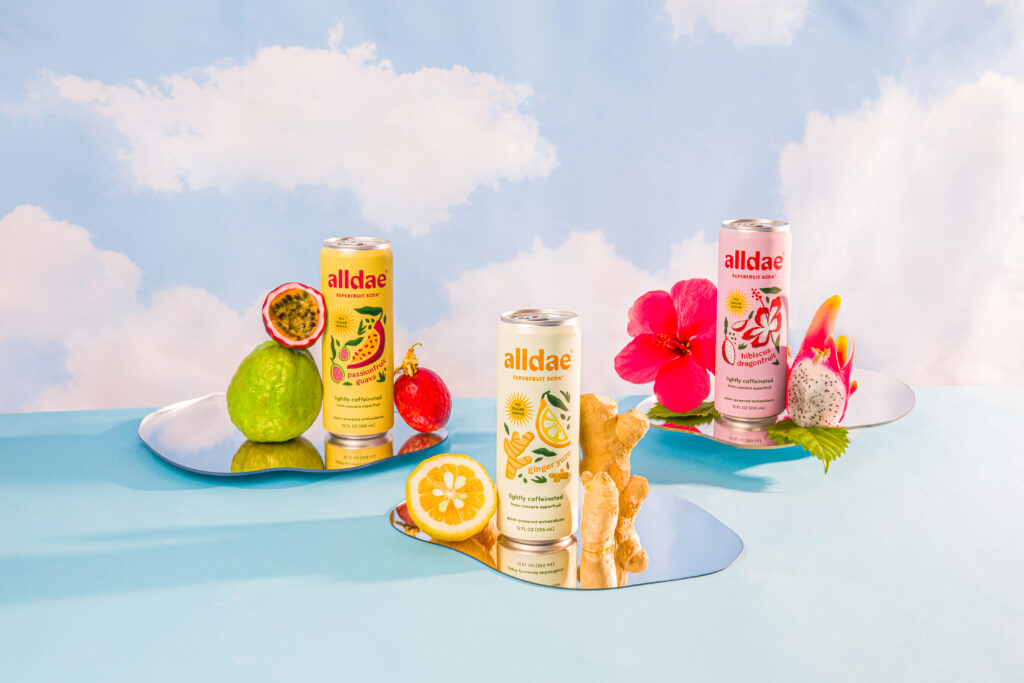
Cascara can serve as the perfect middle ground. Both Alldae’s and The Other Side of Coffee’s RTDs contain 30mg of caffeine, versus the 95mg in a typical cup of brewed coffee.
“Cafe owners [often mention] how many times someone comes in for a coffee and their friend says, ‘I can’t, it’ll keep me up all night,’” says McDonnell. “That’s the upsell, I tell them.”
Meanwhile, Diana has developed both long drinks and mocktails with Dianae based on requests from Swiss cafes. His “Berry Power” recipe combines his cascara drink with soda water and berry juice.
Diana’s vision for the future includes cascara as a third, standalone category beside coffee and tea—but he also understands it will take time. “People are interested in new things, but they’re also afraid to take risks,” he says.
Regional regulatory differences around cascara can also influence availability and consumer uptake. In 2022, the European Union designated cascara a “novel food” that is only approved for use in beverages—and cascara beverages must be clearly labeled to reflect their connection with the coffee plant. (Cascara can also be sold in bags for home use.) Still, Diana initially struggled to import Ethiopian cascara because the Ethiopian Ministry of Agriculture only had export categories for coffee and tea.
“Producers have told me the most important thing is to build demand for cascara,” McDonnell says. “We want to grow our business to help stabilize demand, and then see how we can best allocate sourcing in a way that makes an impact for [producers].”
‘A Rising Tide Raises All Ships’
Despite the impact of climate change on coffee cultivation, Carufel says that coffee cherry shortages are unlikely. Currently, “our suppliers have plenty merely because global demand isn’t high enough yet.”
Carufel says grocery buyers like Wegmans, where the brand recently launched, are excited to promote upcycled products. However, many consumers see the sustainability angle of coffee fruit drinks as a feel-good bonus rather than the main reason for purchase.
That said, upcycled coffee cherry products may offer benefits across coffee’s value chain.

According to The Coffee Cherry Company, which processes coffee cherries into a “flour” that can be added to other products, buying coffee fruit creates a market to upcycle what would otherwise be a waste product. The company estimates that for every truckload of cascara bought, 280,000 fewer pounds of fruit are left to decay in fields, which prevents 101,000 kilograms of carbon dioxide equivalent (CO2e) from being emitted. Buying coffee fruit also has the potential to increase producer revenue, although concrete figures aren’t yet available.
Despite the challenges they face making coffee fruit RTDs viable, many in the sector welcome friendly competition. “Personally, I’m just excited to see the category grow,” says McDonnell. “In my mind, we have different products that appeal to different audiences, just like there are a lot of different types of kombucha. At this point, a rising tide raises all ships. We can compete later—or maybe not at all.”
Carufel shared similar thoughts. “We would love to see other products on the shelves advocating for the coffee fruit. The more products out there, the more consumers will know about the fruit in general.”
Both also acknowledged the need for continued educational messaging about the coffee fruit, something they plan to keep constant even as their branding evolves. Overall, says Diana, “The biggest challenge for cascara is communication. People need to know this has big potential.”



